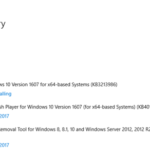On a Windows 10 based computer, is impossible to install the Security Update KB3213986 (Jan 10, 2017) or the Security Update KB3206632 (Dec 13, 2016) because the installation failed with error 0x800f0900 or 0x80070002.
Problem description: Windows 10 Update KB3213986 fails to install with error 0x800f0900 or 0x80070002 or 0x80073701 (Failed to install, Couldn’t complete the updates. Undoing changes).
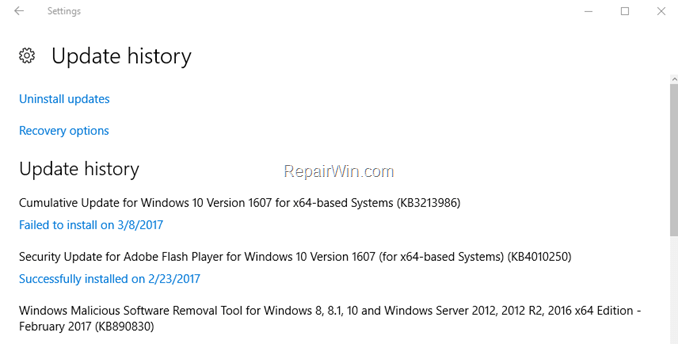
In this troubleshooting guide you will find detailed instructions to resolve the Windows 10 Update(s) KB3213986, KB3206632 installation error(s): 0x80070091 or 0x80070002.
How to fix KB3213986, KB3206632 Failed to Install problem in Windows 10.
Important: Before proceeding to the steps below. try the following:
a. Make sure that the Background Intelligent Transfer Service (BITS) and the Windows Update service are started.
b. Disable your Security/Antivirus Software.
c. Disconnect all USB devices (e.g. USB Flash Disks, the USB Wireless receiver for you mouse or keyboard, etc.)
d. Make sure that the Year/Date & Time settings are correct.
Method 1. Run Windows Update Troubleshooter.
The first method to solve the “KB3213986 failed to install” problem is to run the Windows Update Troubleshooter.
1. Right click on Start menu and choose Control Panel.
2. Set the View By: to Small icons and click Troubleshooting.
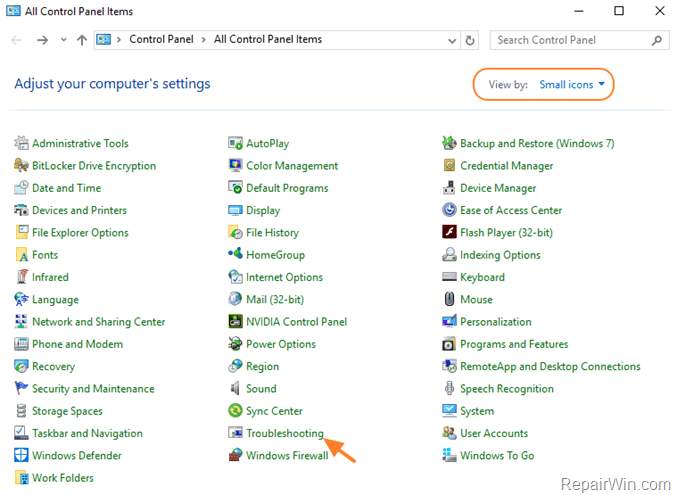
3. Under System and security section select Fix problems with Windows Update.
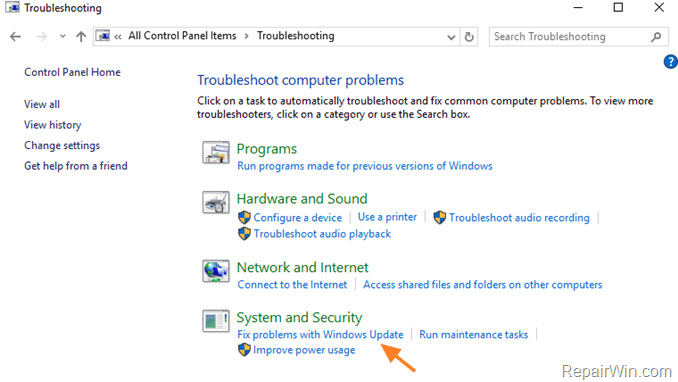
4. Press Next at the first screen and then choose Try troubleshooting as an administrator.
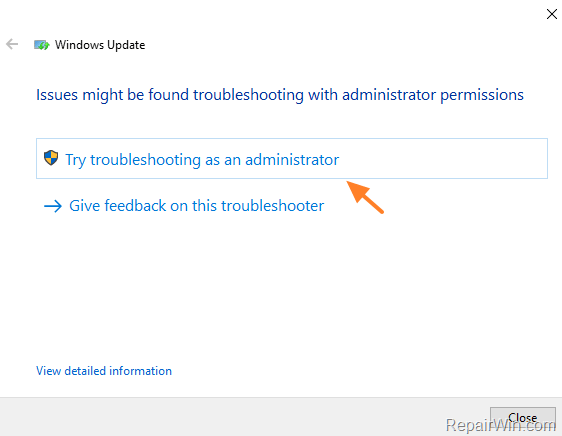
5. When the repair is completed, restart your computer and run Windows Update (Update & security > Check for Updates).
Method 2. Remove Windows Update Files.
The Windows Updates Files are stored into the SoftwareDistribution folder (C:WindowsSoftwareDistribution). Some times this folder becomes corrupted and needed to re-create it, in order to download and install updates from scratch.
To rebuild (re-create) the “SoftwareDistribution” folder follow the steps below:
1. Open Windows Services control panel: To do that:
- Press Windows
 + R keys to open the run command box.
+ R keys to open the run command box. - In the Search box, type: services.msc & click OK.
- (Accept the UAC warning if appears).

2. In Services control panel locate the Windows Update service.
3. Right-click on Windows Update service and select “Stop”.

4. Open Windows Explorer and navigate to: C:Windows folder.
5. Find and Delete the “SoftwareDistribution” folder (or rename it. e.g. to “SoftwareDistributionOLD”) .
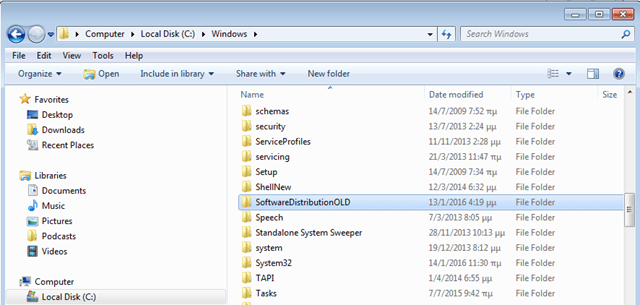
6. Now go back to Windows Services control panel, right-click on Windows Update service and select “Start”.

7. Restart your computer.
8. After restart, navigate to Update & security and Check for Updates. *
* Note: If the update fails again, then delete the “SoftwareDistribution” folder again and then download and install manually the Windows Updates from the Microsoft Update Catalog:
- Cumulative Update for Windows 10 Version 1607 (KB3213986)
- Cumulative Update for Windows 10 Version 1607 (KB3206632)
Method 3. FIX Windows Update Errors 0x800f0900, 0x80070002 with DISM.
Try to repair Windows Update Corruptions by using the System Update Readiness (DISM) tool.
1. Open command prompt as Administrator:
- Right-click at the Start menu
 and choose Command Prompt (Admin).
and choose Command Prompt (Admin).
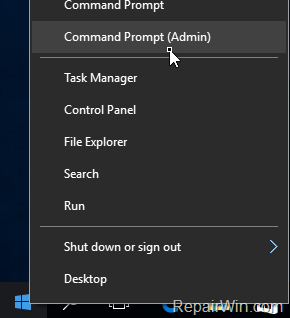
2. Type DISM.exe /Online /Cleanup-image /Restorehealth and press Enter.

3. When the DISM operation is completed, type the following command and hit Enter:
- sfc /scannow

4. Now wait until the System File Checker repairs the Windows System Files.
5. When this done, restart your computer.
6. Run Windows Update and try to install the failed update.
Method 4. Restore your System to a Previous State.
Try to restore your system to a previous working state and then try to install updates.
1. Press Windows ![]() + R keys to open the run command box.
+ R keys to open the run command box.
2. Type rstrui & click OK.
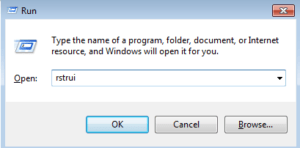
3. Click Next at the first screen.
4. Choose an earlier working state (Date/Time) and click Next to start the restore process.
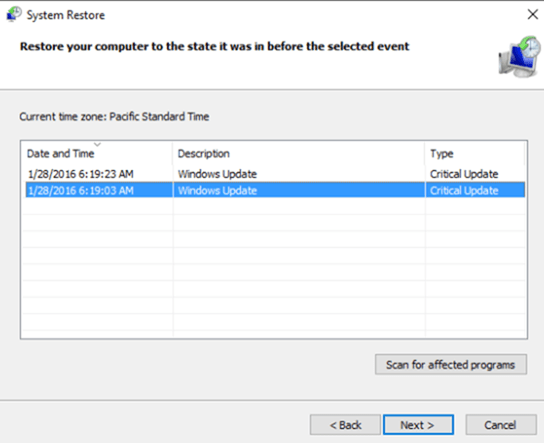
4. When the restore is completed, run Windows Update to find and install Updates.
Method 5. Perform a Repair Upgrade of Windows 10.
– If everything else fails, then perform a Windows 10 Repair – Upgrade.
Did it work for you?
Please leave a comment in the comment section below or even better: like and share this blog post in the social networks to help spread the word about this solution.

